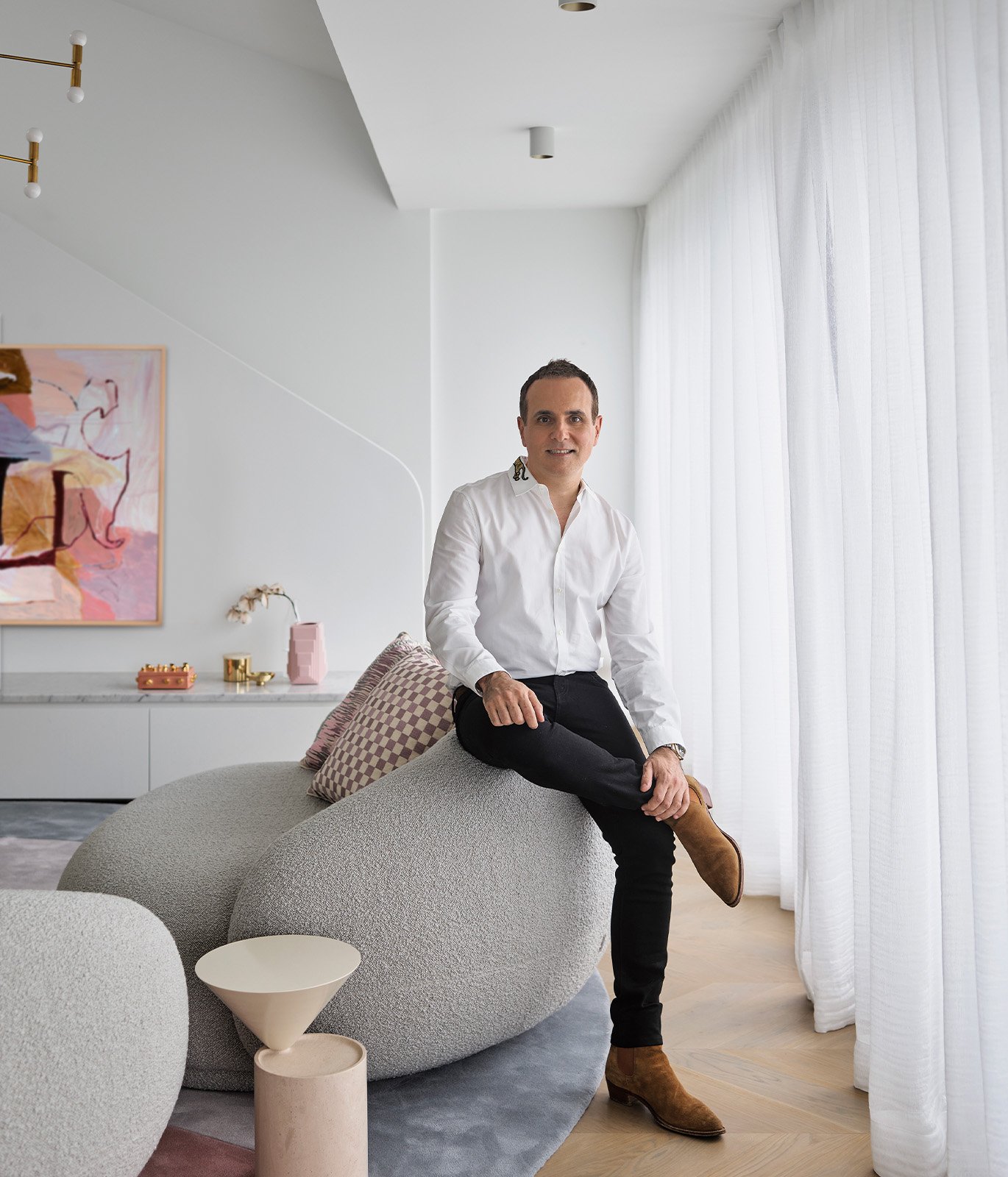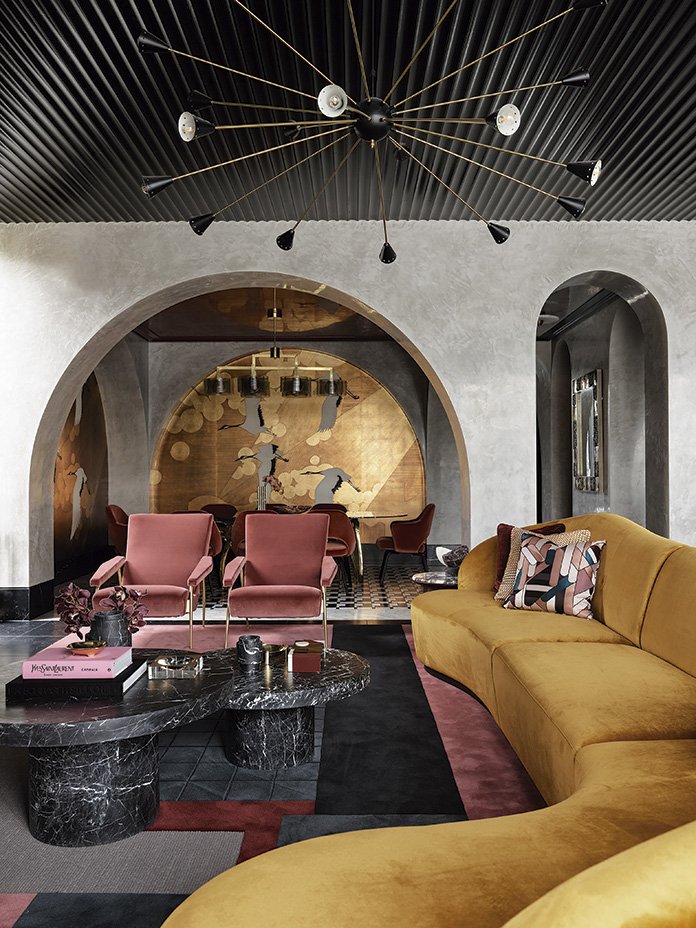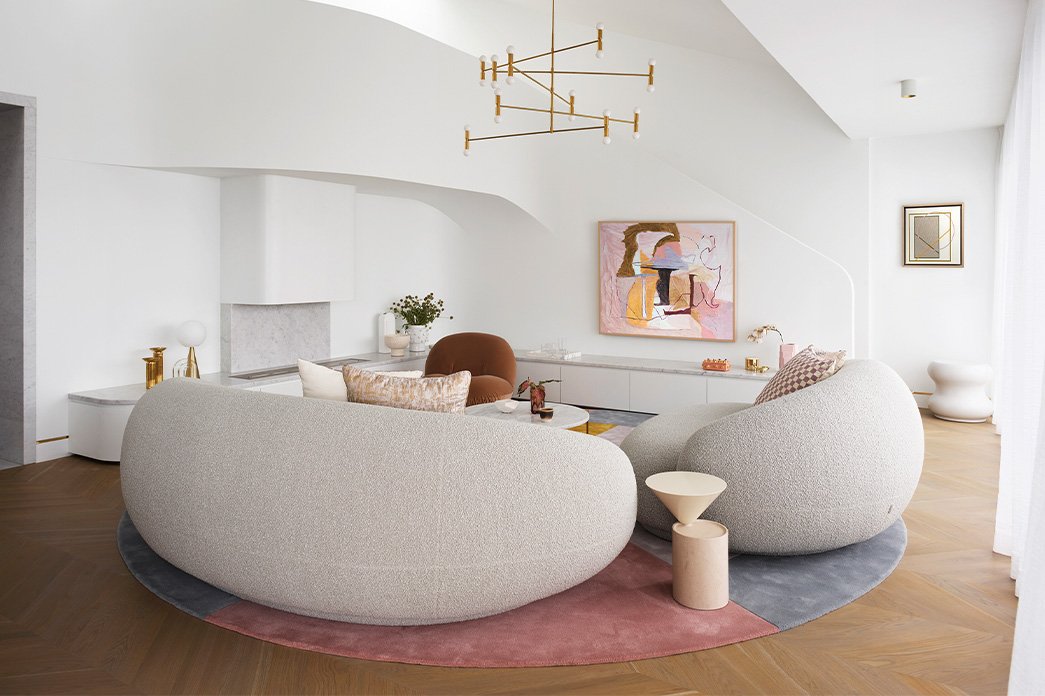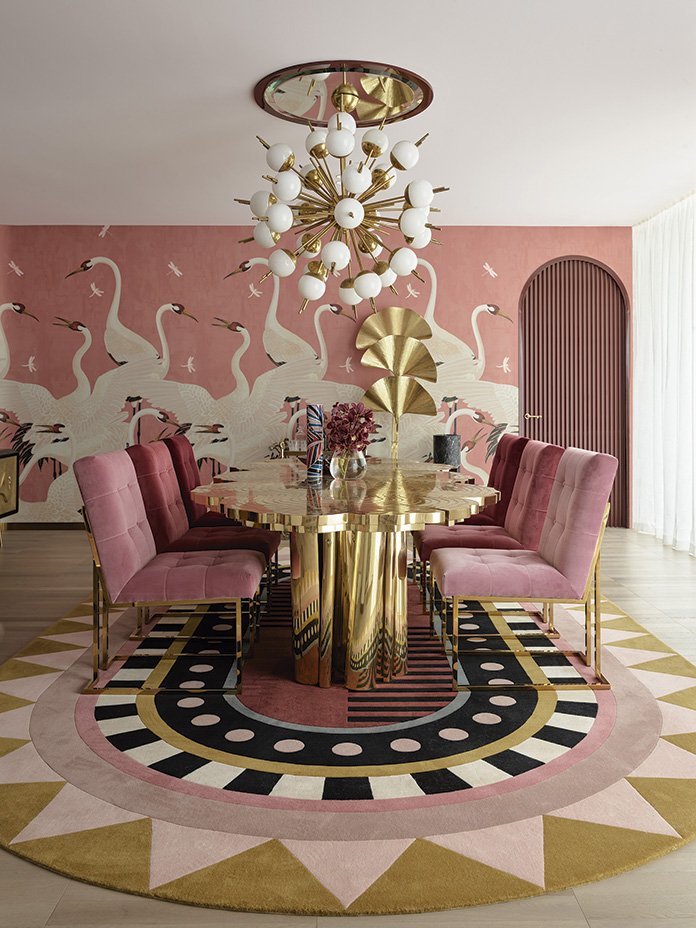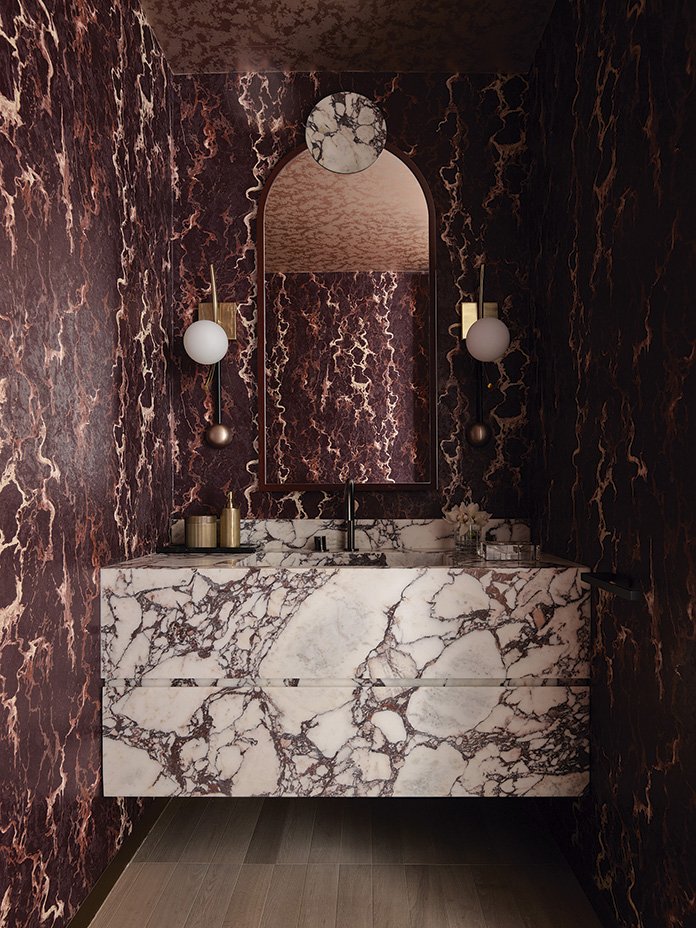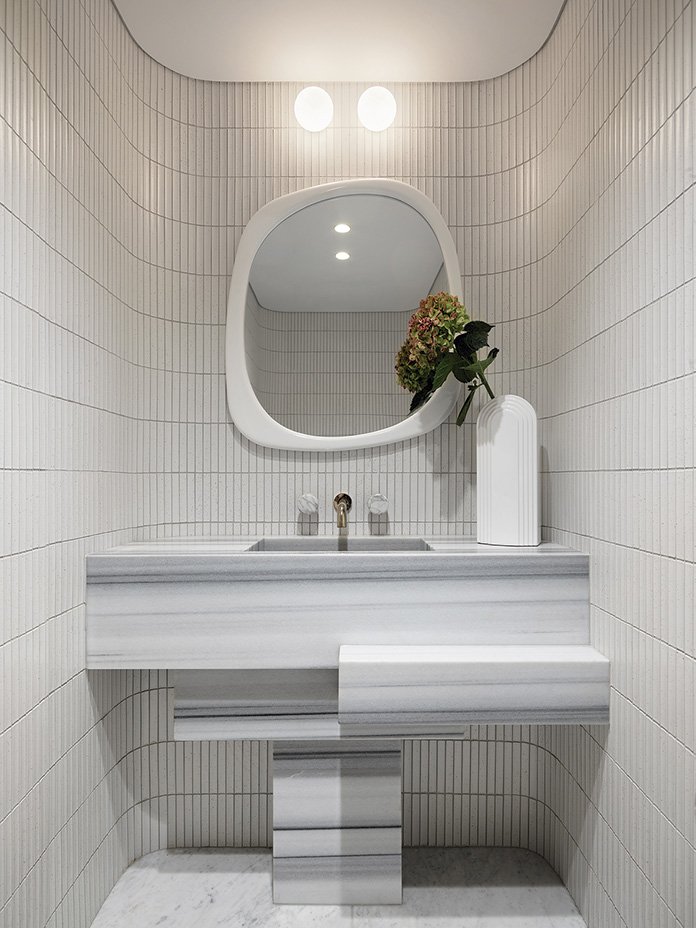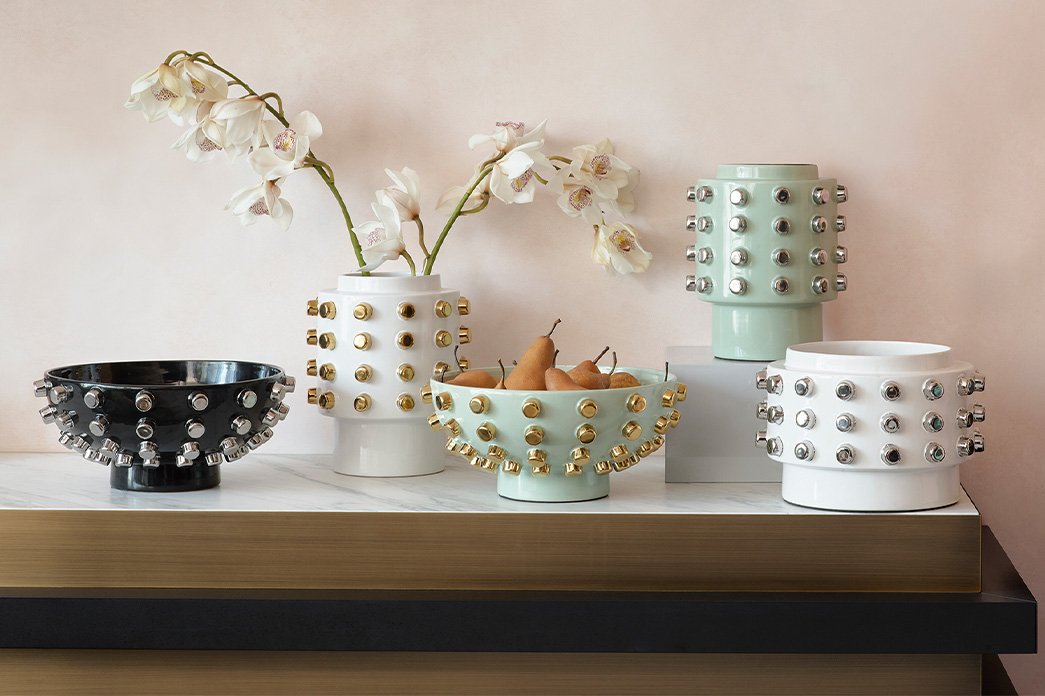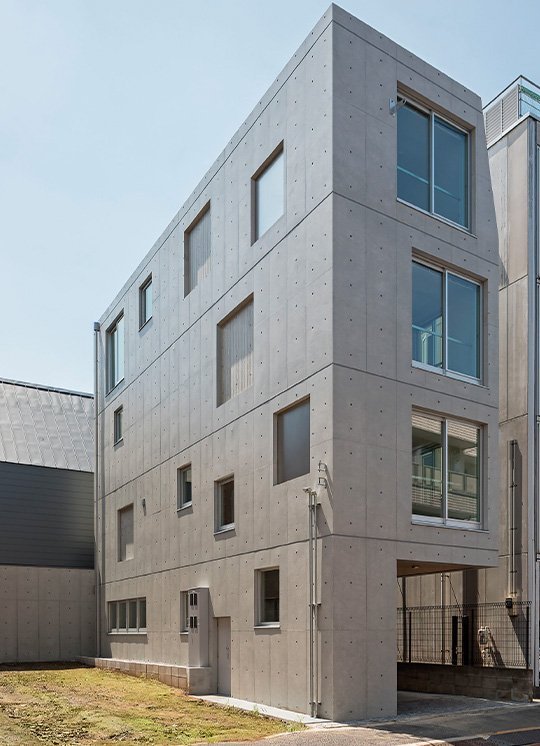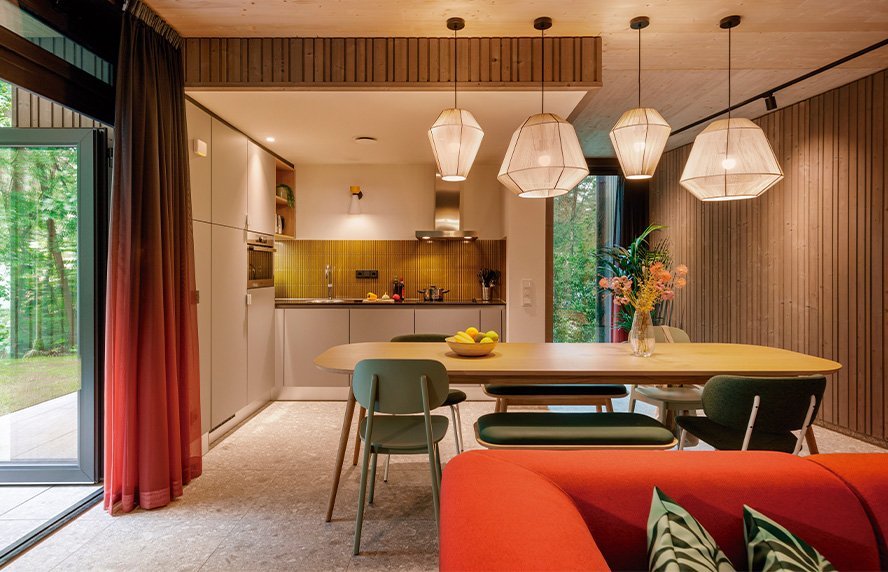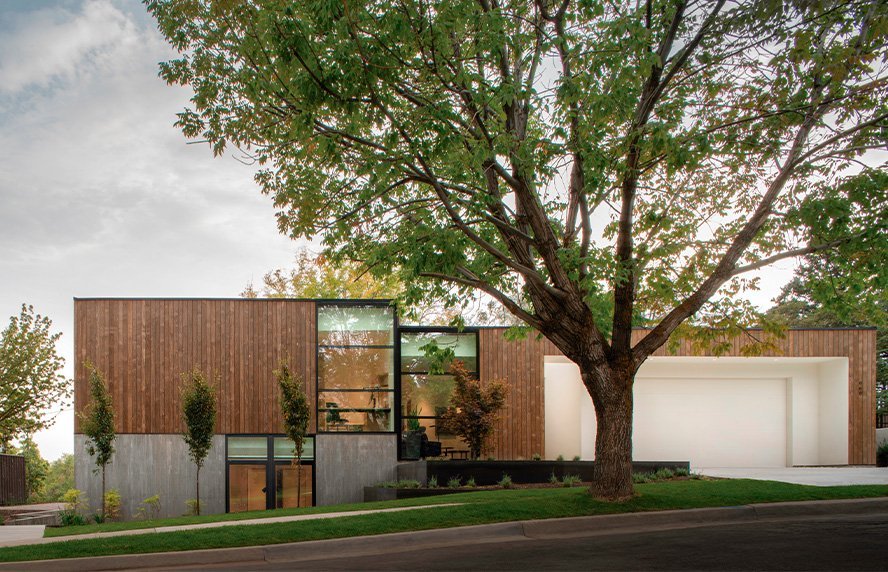When it comes to creativity, where do you find your inspiration?
I love to draw on a wide array of cultural references, from film and television to art, fashion and music – and I distil all of those influences within my interiors and product designs. This goes back to when I was very young and was so inspired by the interiors I would see on screen, particularly Alexis Carrington’s office on Dynasty! I also love to draw on particular eras and moments in fashion and music, including Studio 54 in the late 1970s and the new wave superstars from the early 80s. The architecture from that era has been another influence – I’ve always been inspired by Halston’s Manhattan townhouse by modernist architect Paul Rudolph, and a lot of the 1970s and 80s postmodernist Italian architects have informed my aesthetic as well. But I also love brutalism, art deco and Italian rationalism, and Gio Ponti’s design for the Parco dei Principi hotel in Sorrento features patterns that I often refer back to. While my style leans towards the maximalist, with lots of layers of pattern, colour and mixed materials, underpinning those elements there is always a strong modernist sensibility. Travel is also a major influence on my work, and I love to look at fashion retail spaces for inspiration whenever I’m travelling.
Is there anyone you look up to in the industry?
Paul Rudolph, Oscar Niemeyer, Gio Ponti, Harry Seidler, Mario Botta, David Hicks, Martyn Lawrence Bullard, Jonathan Adler, Verner Panton and Kelly Wearstler.
